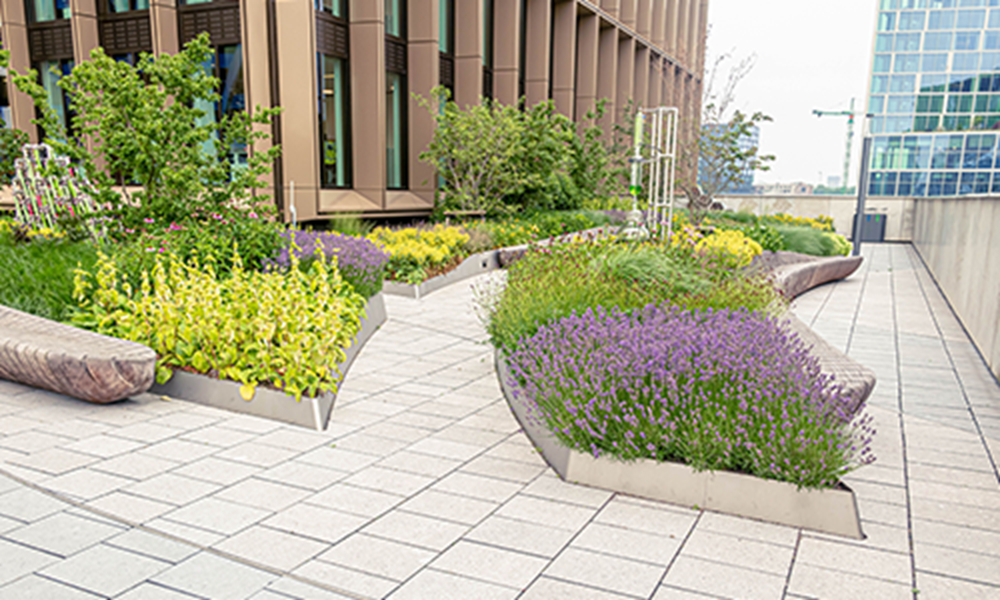European Medicines Agency Amsterdam
With the FOAMGLAS® Compact Roof System, the blue roof of the EMA building is in seventh heaven

Extreme drought and extreme rain: with global warming, we will face them more and more often. Water issues are a topic very high on everyone's agenda. With retention roofs, we can store and temporarily buffer rainwater that falls on flat rooftops.
Besides storing and buffering rainwater, retention roofs offer another additional benefit. Because rainwater has a cooling effect, indoor temperatures will stay lower. This provides more comfort during summer and significant savings on air conditioning.
1400 SQUARE METRES
Given its watertightness, high reliability and exceptional compressive strength, the FOAMGLAS® Compact Roof System is increasingly used for retention roofs. The building of the European Medicines Agency (EMA) at the Zuidas in Amsterdam would be a prime example of this. There, 2 x 150 mm FOAMGLAS® T3+ slabs were installed on a 1,400 square metre concrete substrate. Essential for a FOAMGLAS® Compact Roof are a flat substructure and a complete sealing of the insulation slabs with bitumen. First, a bitumen emulsion was applied followed by the burning of a bituminised polyester membrane. Then, using liquid bitumen, the FOAMGLAS® insulation slabs were completely bonded to each other and to the substructure. The insulation layer was finished with a two-layer Soprema roofing with root-resistant top layer. A retention roof system from Optigrün with intensive greening and various terrace finishes was applied to the roof covering.
Since the joints between the FOAMGLAS® slabs are completely sealed, a non-absorbent layer is created that is fully bonded to the underlying support structure and the overlying waterproofing membrane. In case of localised damage to the membrane, the FOAMGLAS® insulation takes over from the membrane and prevents water from spreading over a larger part of the roof. Thanks to the compact roof structure, damage can be located immediately and repaired at low cost.




